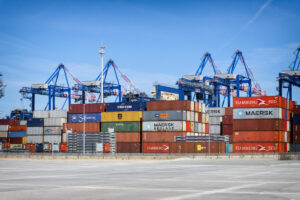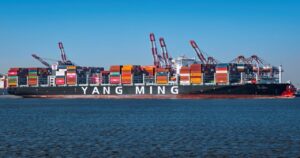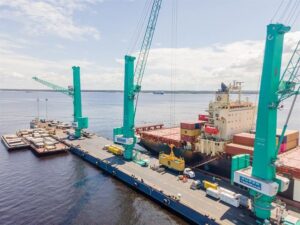A return to profits and improving terminal efficiencies have seemingly helped the industry move on from the doom and gloom of the COVID-19 pandemic.
There are still major challenges to overcome, including port congestion, uncertainty in the supply chain and the growing threat of so-called black swan events like the blockage of the Suez Canal.
However, we have seen that major players in the market from ports to shipping lines are recording profits.
Shipping lines
It has been well documented that during the last 12 months shipping lines have been hugely profitable.
During Q1 of 2021 A.P Moller – Maersk (Maersk) reported “exceptionally strong” volume and earnings figures. The carrier said in a statement that earnings grew in all segments of the business in Q1 of 2021.
Its earnings before interest, taxes, depreciation and amortisation (EBITDA) in Q1 were $4 billion, up from $1.5 billion Q1 2020. Revenues were also up, this time reaching $9.5 billion from the $7.2 billion it made 12 months ago.
These figures represent a record for quarterly figures and have been driven by solid demand across ocean, logistics and terminals.
Carriers across the world have enjoyed strong profits amid the COVID-19 pandemic, benefitting from consumer demand and high freight rates.
A recent report by Drewry Shipping Consultants said that the boom could last for at least another two years, with high freight rates locked in until 2022.
Port recovery
On the side of terminals, COSCO Shipping Ports’ (CSP) claimed that the effects of the pandemic have gradually eased after its gross profits increased by 35.9% year-on-year (YoY) in Q1 2021.
CSP attributed the recovery to global vaccination programmes. Furthermore, it expects that trade and economic growth will recover.
The company’s terminals handled 30,187,744 TEU in Q1, a YoY increase of 9.9%, with volume at its subsidiaries growing by 5.3% and reaching 5,365,528 TEU.
Meanwhile, in Israel, Ashdod Port has reported an increase of maritime cargo transport because of the closure of aviation during the COVID-19 pandemic. In 2020 the container port unloaded more than 1.5 million TEU.
The overall scope of goods that entered the port was valued at about 108 billion shekels ($33 billion).
“Based on these numbers it appears that contrary to the assumption that the coronavirus would reduce the scope of imports, it appears that private consumption was not harmed. In fact, compared to 2019 there was an increase of a few percentage points,” Ashdod Port said in a statement.
Efficiency topping ports
In early May 2021, the World Bank and IHS Markit launched the Container Port Performance Index (CPPI), measuring ports by differing metrics, taking into account ranges of ship sizes and container moves per call per port.
According to the index, the Port of Yokohama is the world’s most efficient hub, taking just 1.1 minutes to load or unload a container in a standard port call.
This marks the beginning of the CPPI which will be reported annually going forward.
“CPPI 2021 will seek to investigate and explain divergences between statistical and administrative approaches, gaining further understanding of key determinants or influences,” Martin Humphreys, Lead Transport Economist and Global Lead for Transport Connectivity and Regional Integration at the World Bank told a webinar on 5 May.
“The overall objective remains identification of potential improvements.”
He noted that the intention of the index is to be “positive and constructive” as an information source for the benefit of all.








